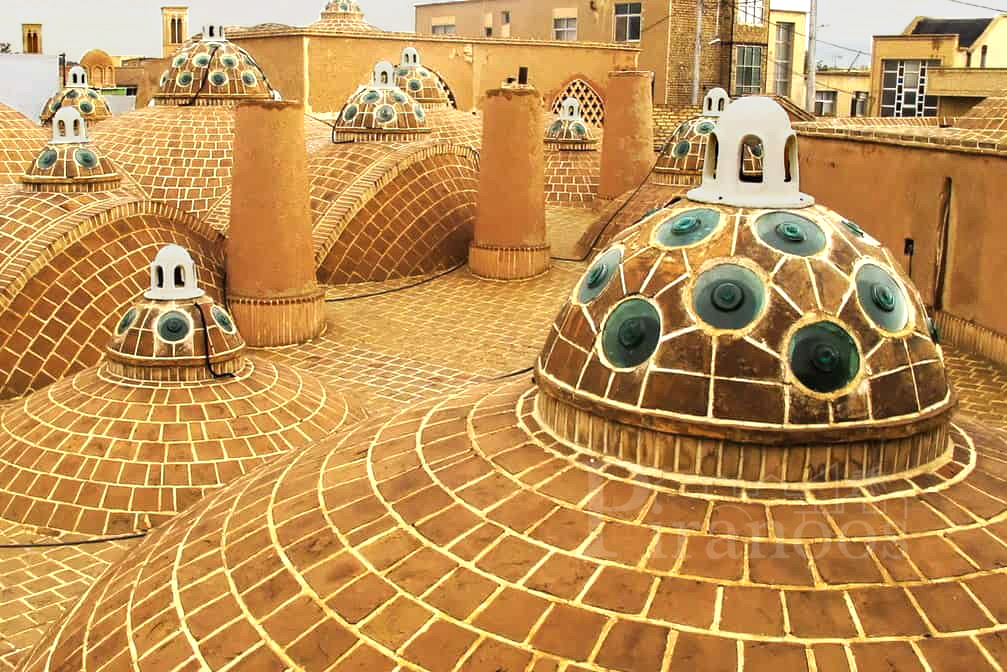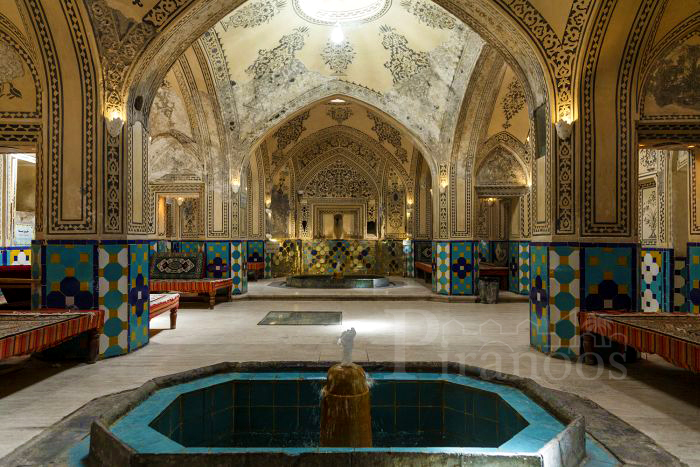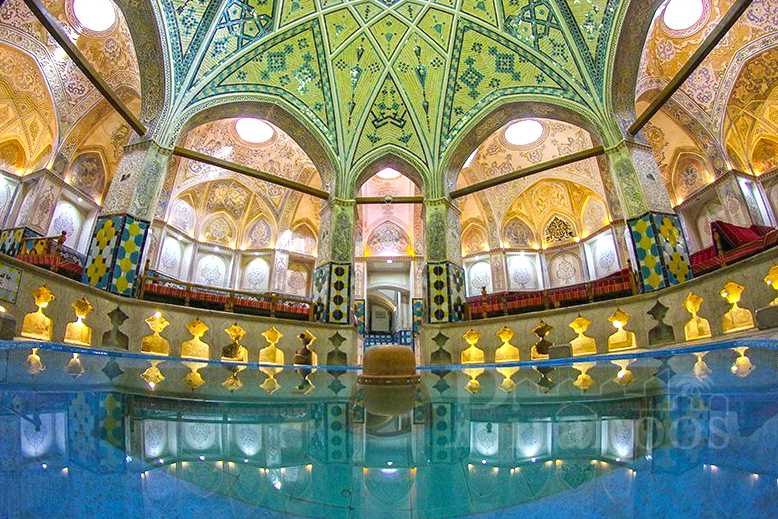This Iran’s national treasure was constructed in the 16th century during the Safavid era and was renovated in Qajar era after the earthquake of 1778. However, to the belief of some, the evidence found after the earthquake reveal that the bathhouse was originally built during the Seljuk era.
This 1100 square meter bathhouse was also renovated in 1996 by Kashan municipality. The usage of the bathhouse was changed to a traditional dining room and again later to a museum.
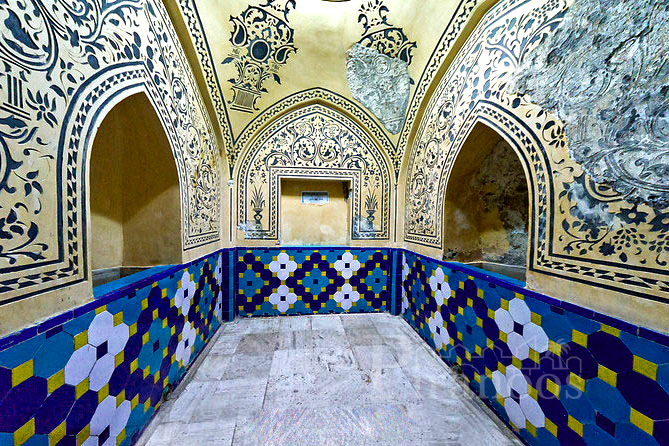
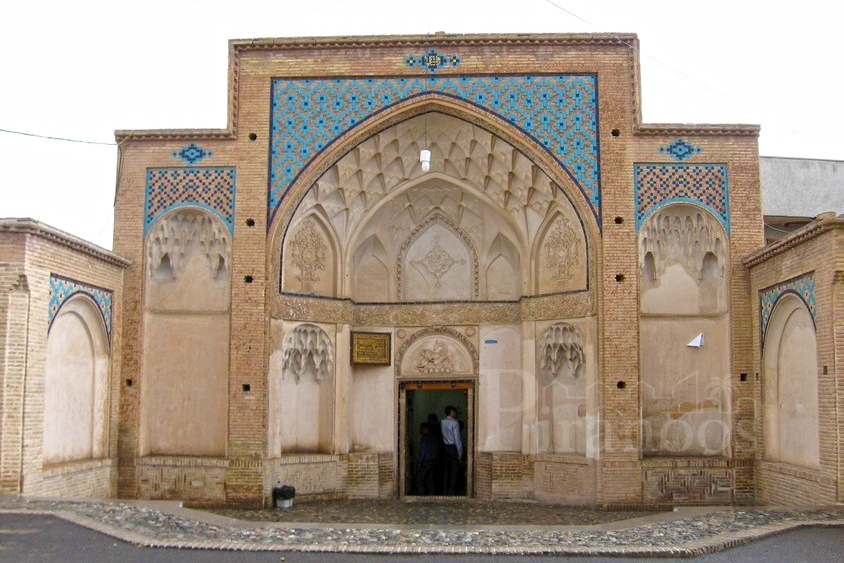
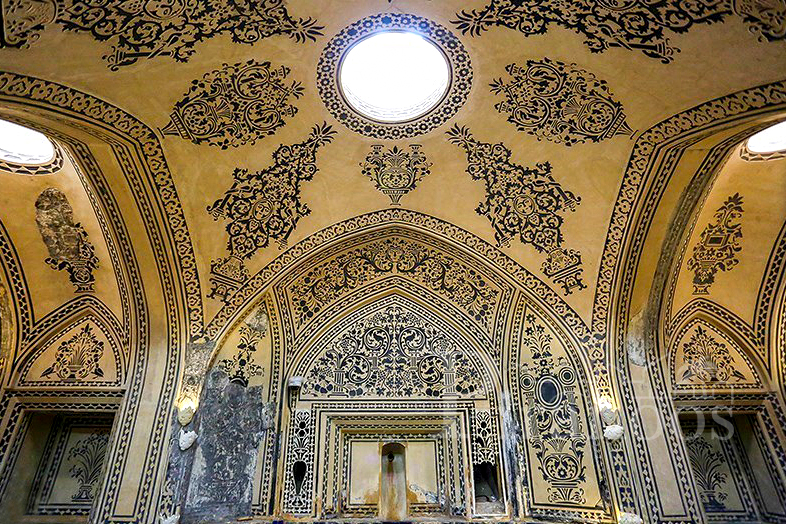
The architecture and decoration of Sultan Amir Ahmmad historic Bathhouse have made it unique among Iranian bathhouses.
It consists of two main sections: 1- Sarbineh which is an octagonal area with a pool in the middle and a dome standing on 8 pillars, and 2- Garmkhaneh which is the hot water bathing area with washing rooms around it and the entrance to Khazineh that is also a bathing room.
Turquoise and gold tile works, plasterwork, brickwork, and delicate artistic painting features make the decoration of the bathhouse. A type of plaster made of milk, egg white, soy flour and lime known as Sarough was used on the walls. Numerous domes with convex glasses windows make up the roof.
